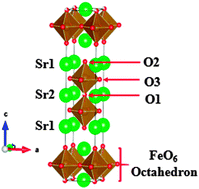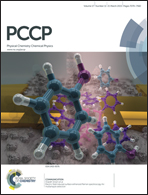Oxygen nonstoichiometry, the defect equilibrium model and thermodynamic quantities of the Ruddlesden–Popper oxide Sr3Fe2O7−δ
Abstract
Oxygen nonstoichiometry of the Ruddlesden–Popper oxide Sr3Fe2O7−δ was measured at intermediate temperatures (773–1073 K) by coulometric titration and high temperature gravimetry. The oxygen nonstoichiometric behavior was analyzed using the defect equilibrium model with localized electrons. From the defect chemical analysis, estimated oxygen vacancy concentration at the O3 sites increases and at the O1 sites decreases with the increasing temperature. This characteristic behavior is considered to be caused by the redistribution of oxygen and vacancies between the O1 and O3 sites. The obtained thermodynamic quantities of the partial molar enthalpy of oxygen,  , and the partial molar entropy of oxygen,
, and the partial molar entropy of oxygen,  , calculated from the Gibbs–Helmholtz equation are in good agreement with those from the statistical thermodynamic calculation based on the defect equilibrium model, indicating that the proposed defect equilibrium model is reasonable.
, calculated from the Gibbs–Helmholtz equation are in good agreement with those from the statistical thermodynamic calculation based on the defect equilibrium model, indicating that the proposed defect equilibrium model is reasonable.


 Please wait while we load your content...
Please wait while we load your content...